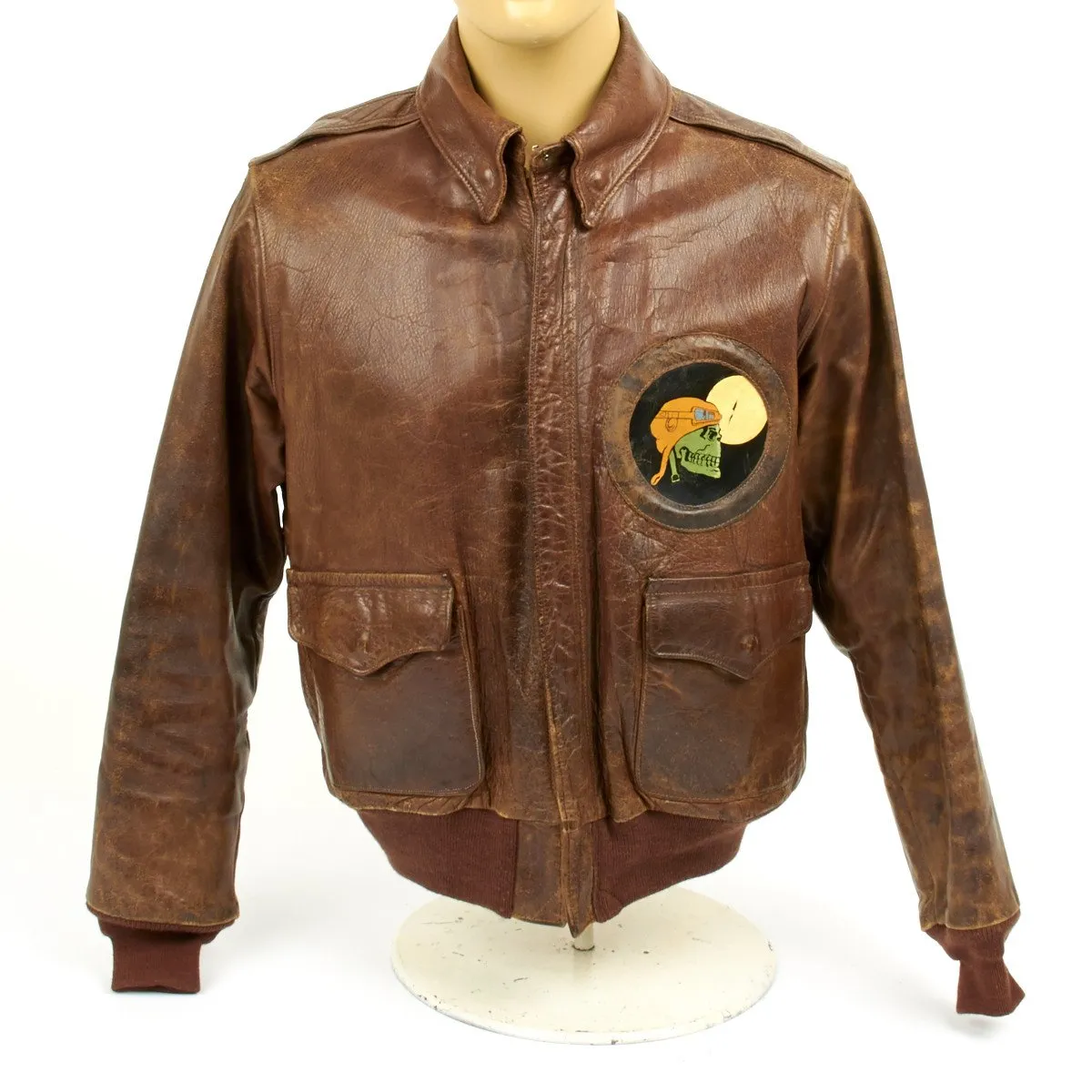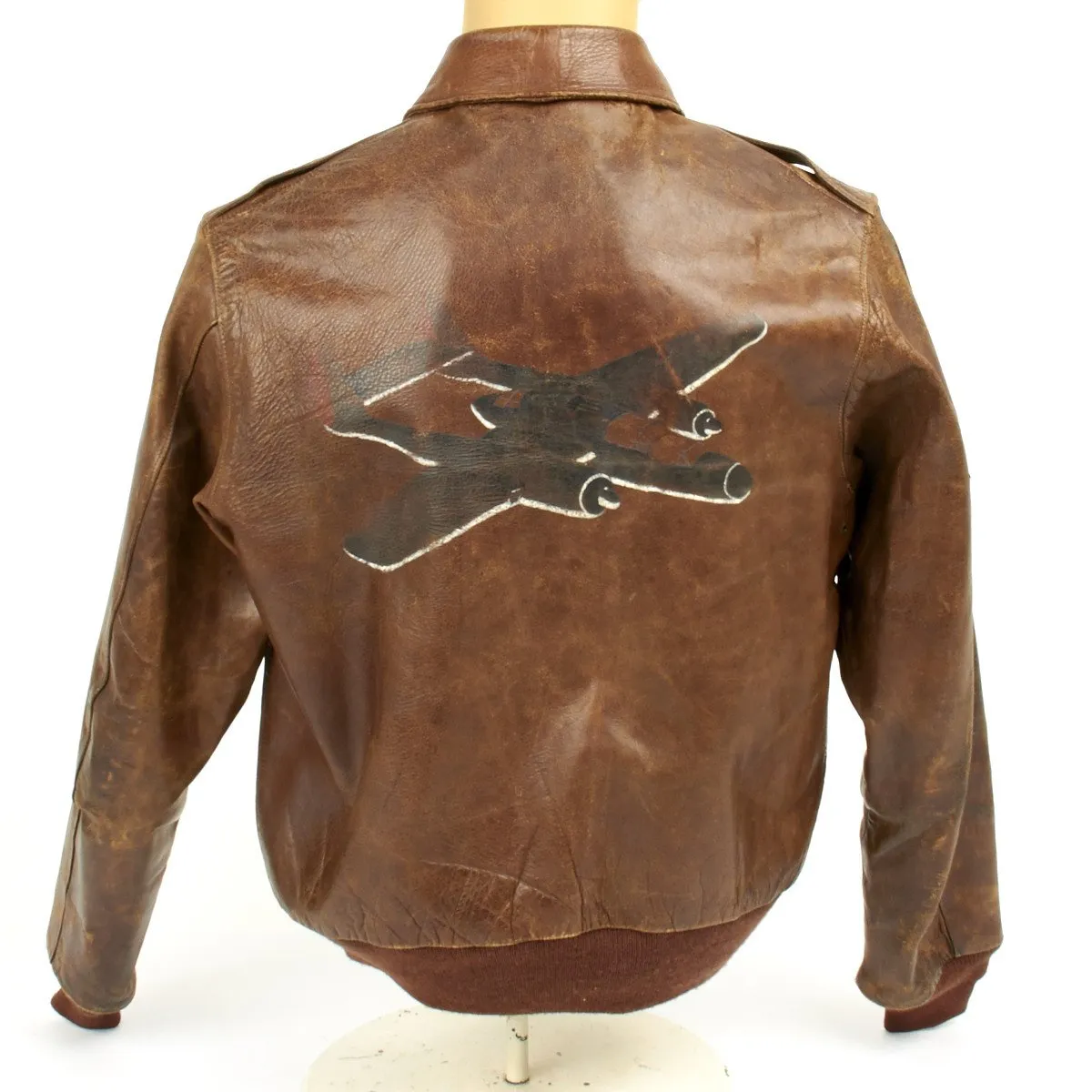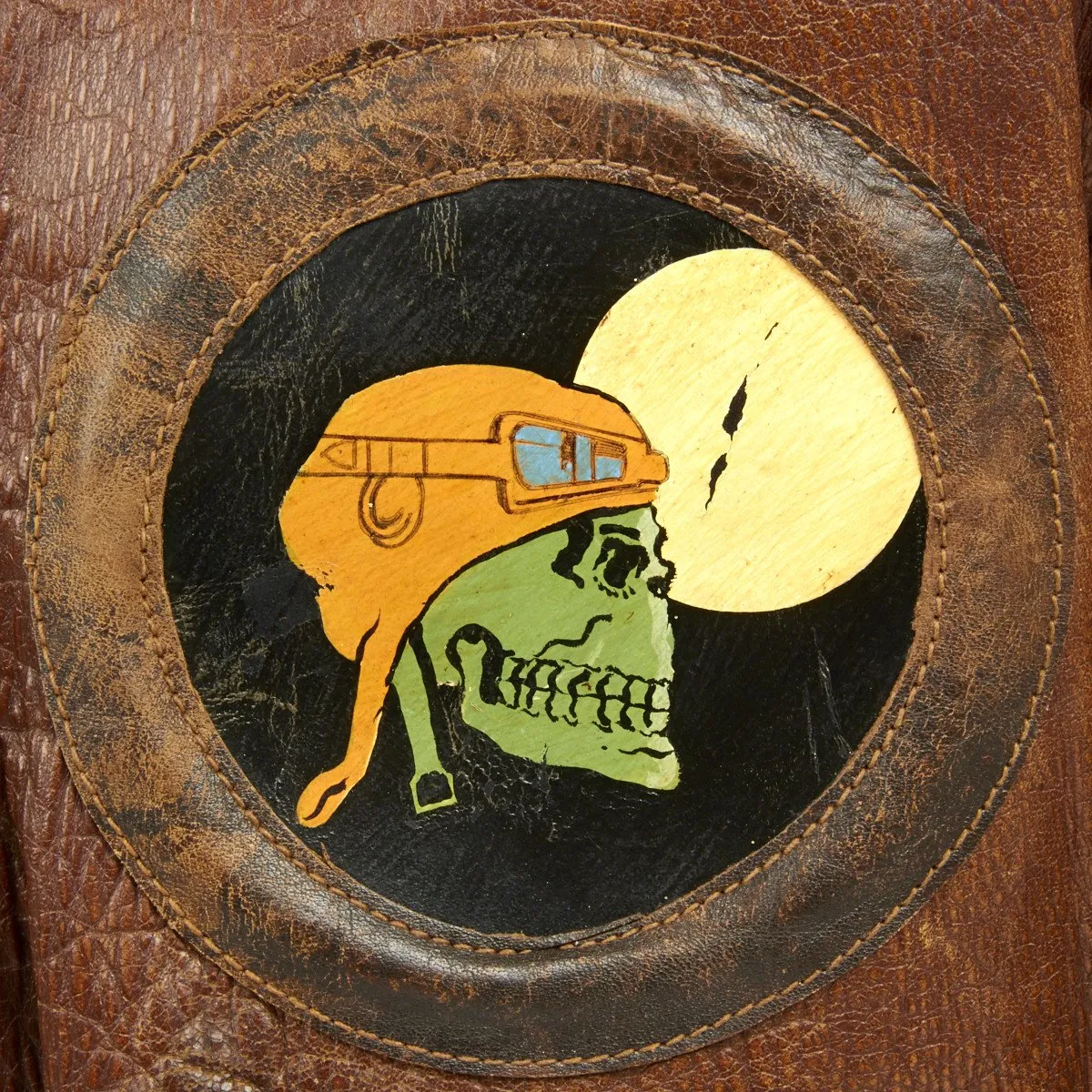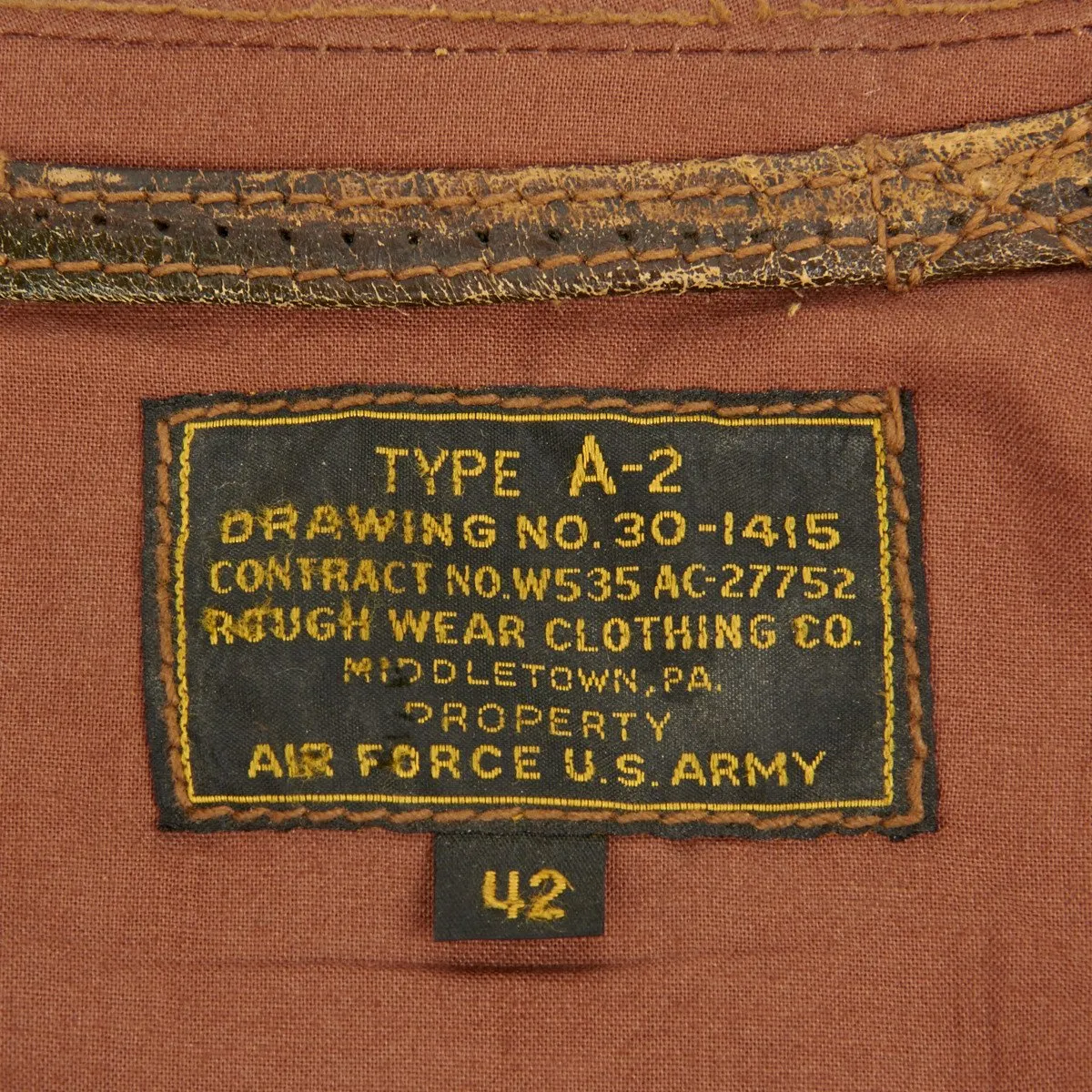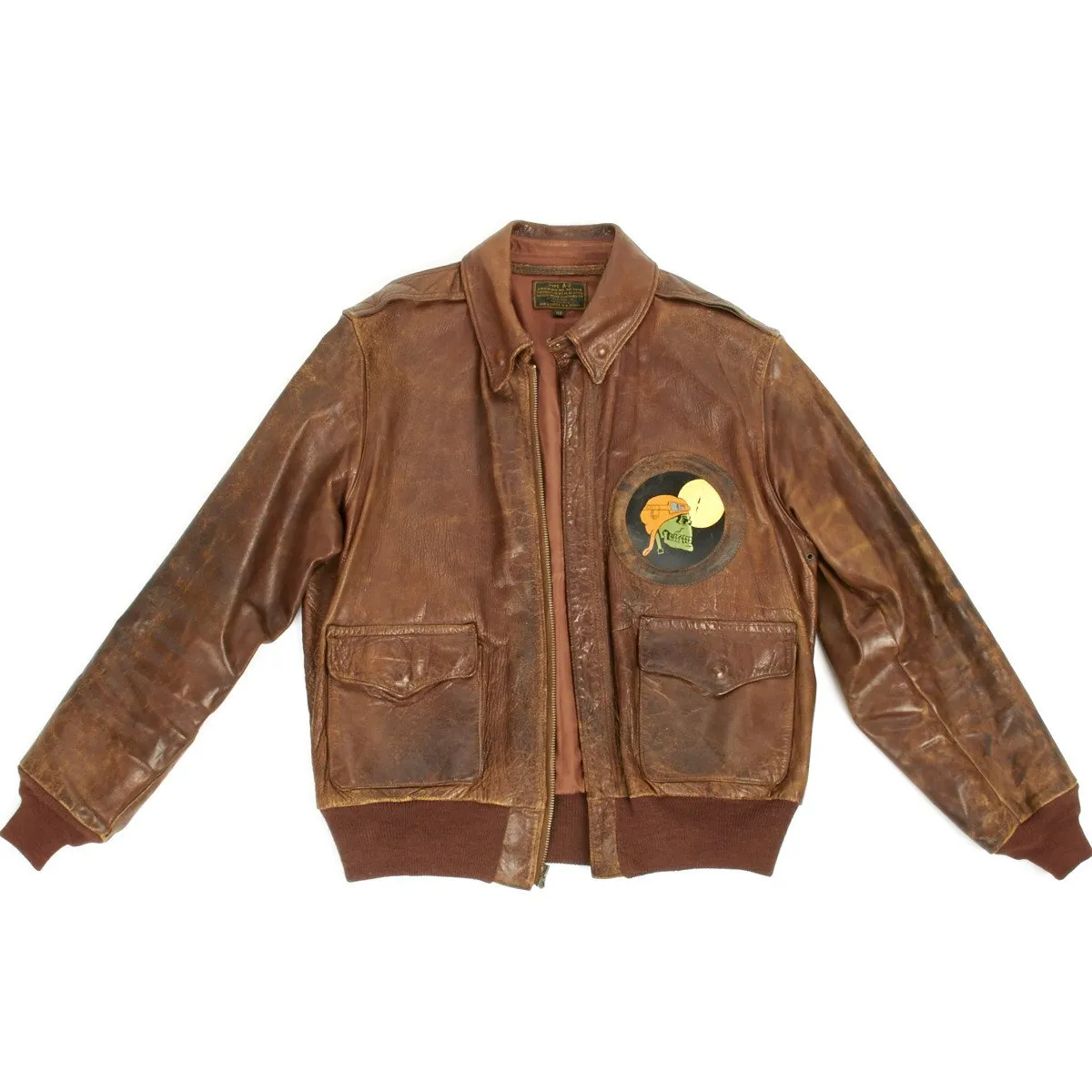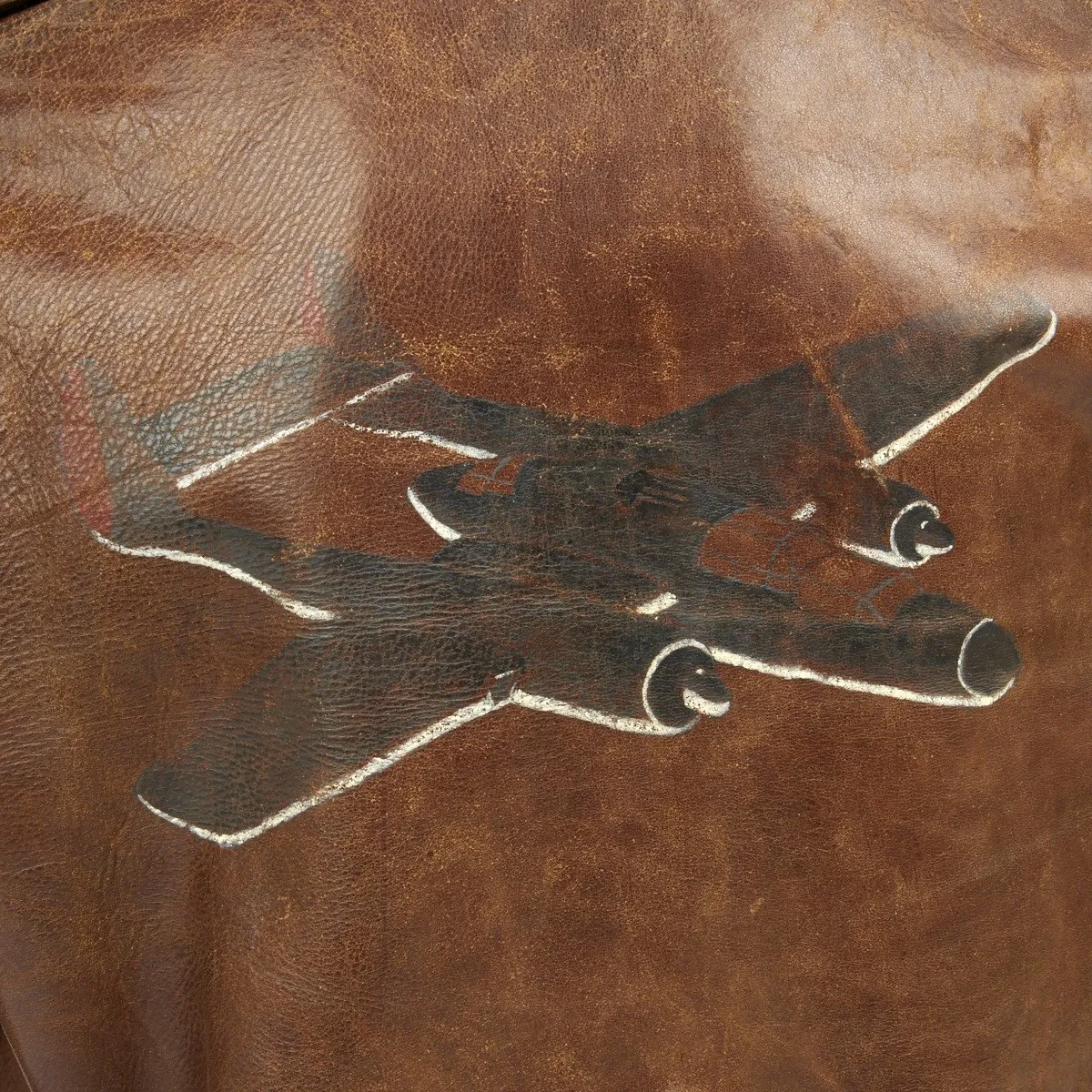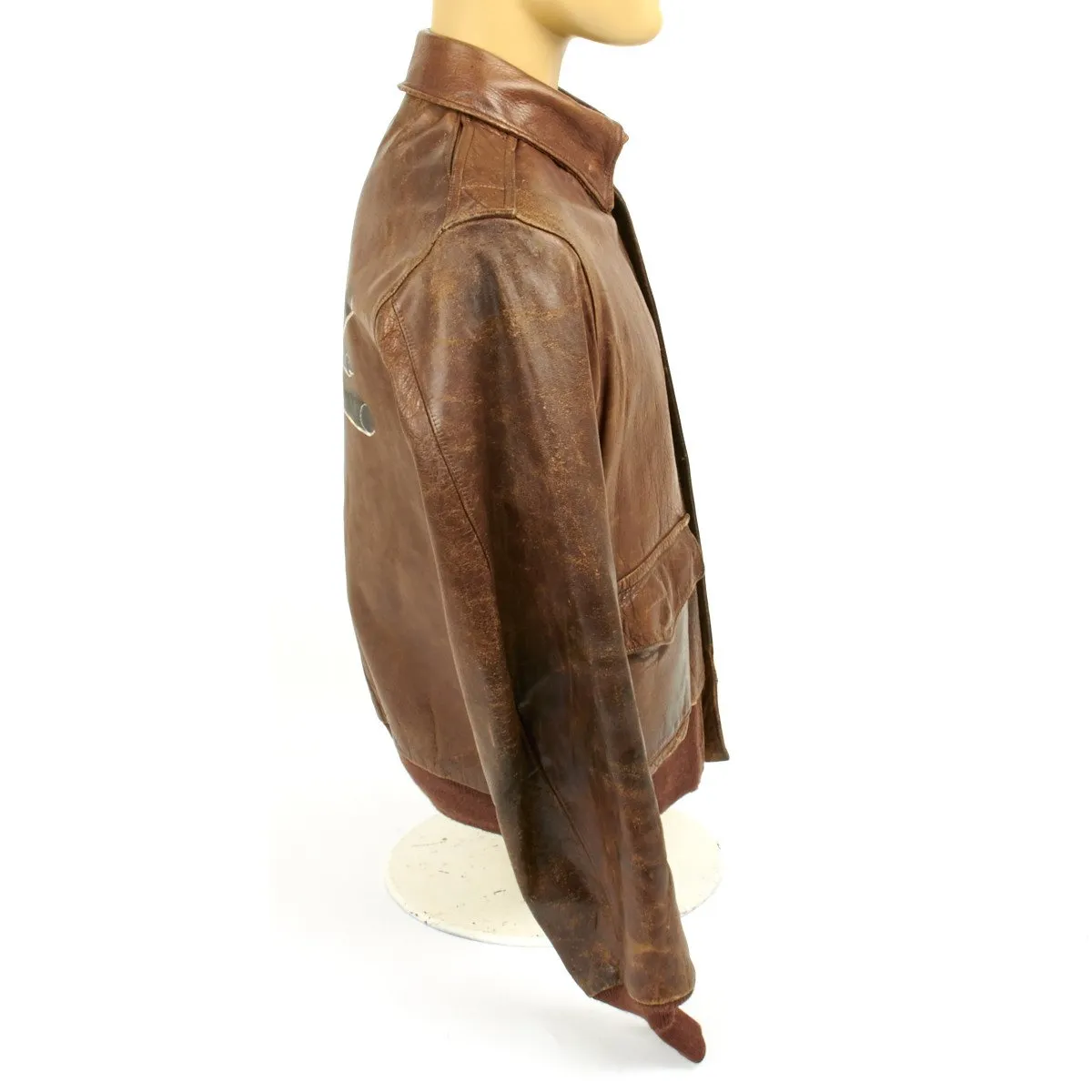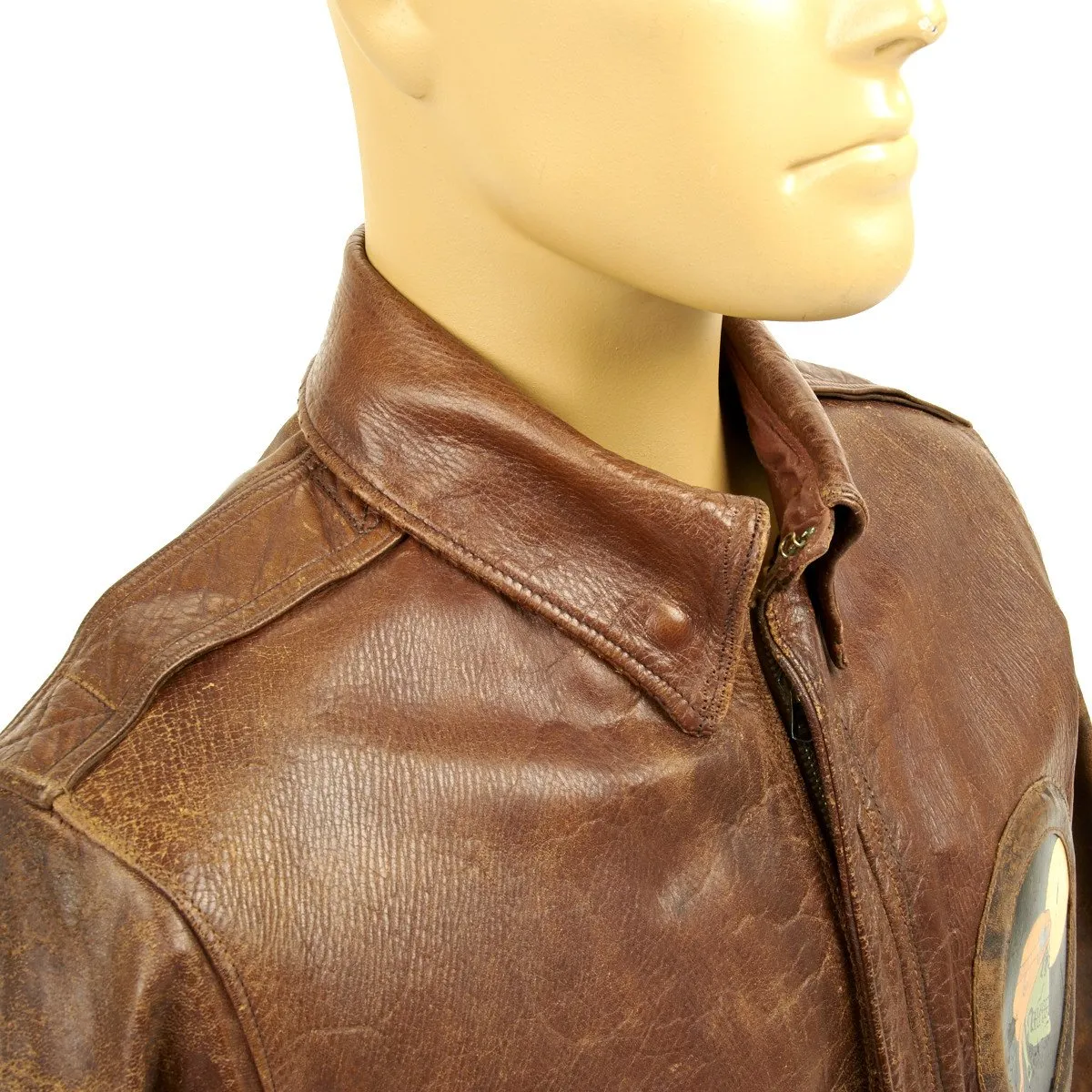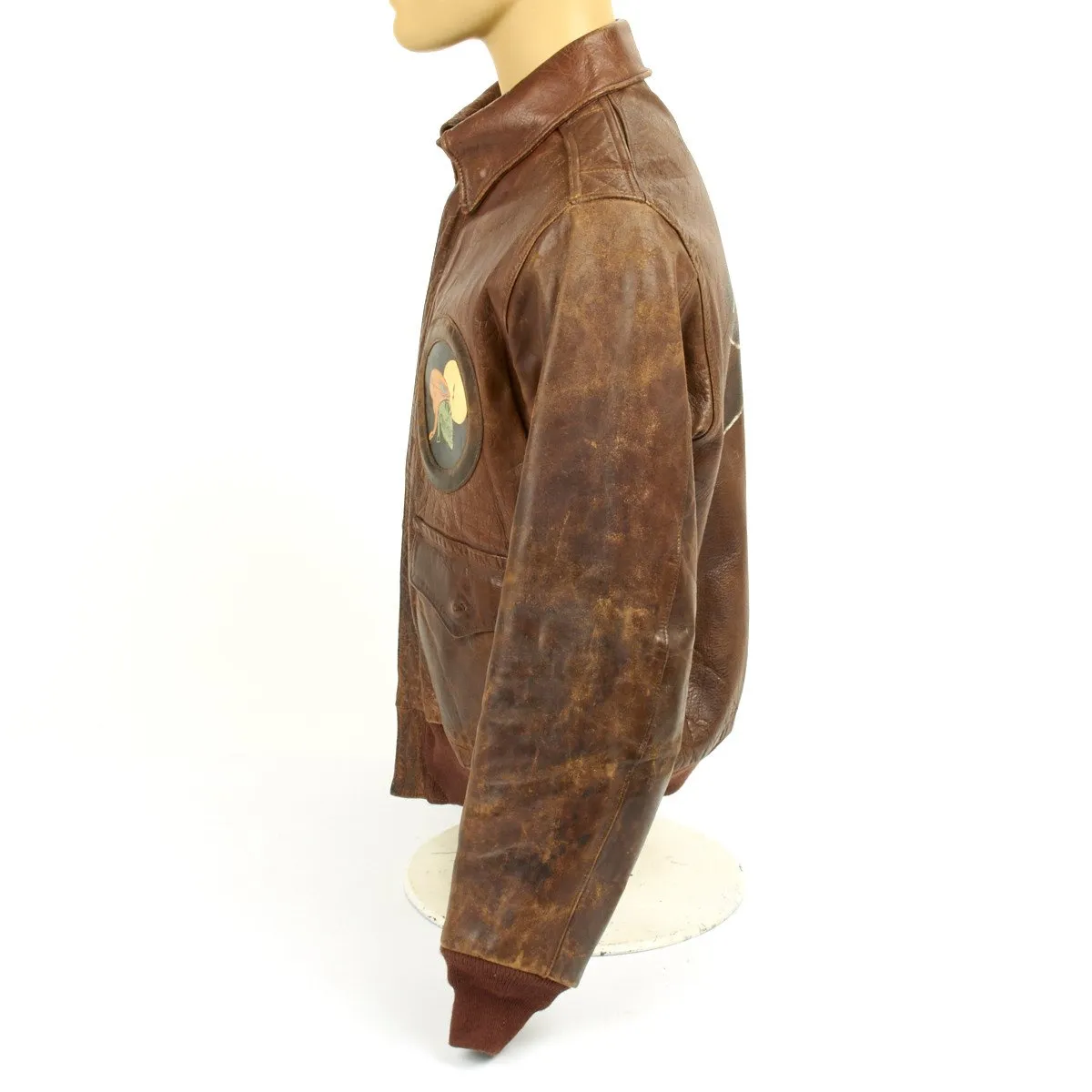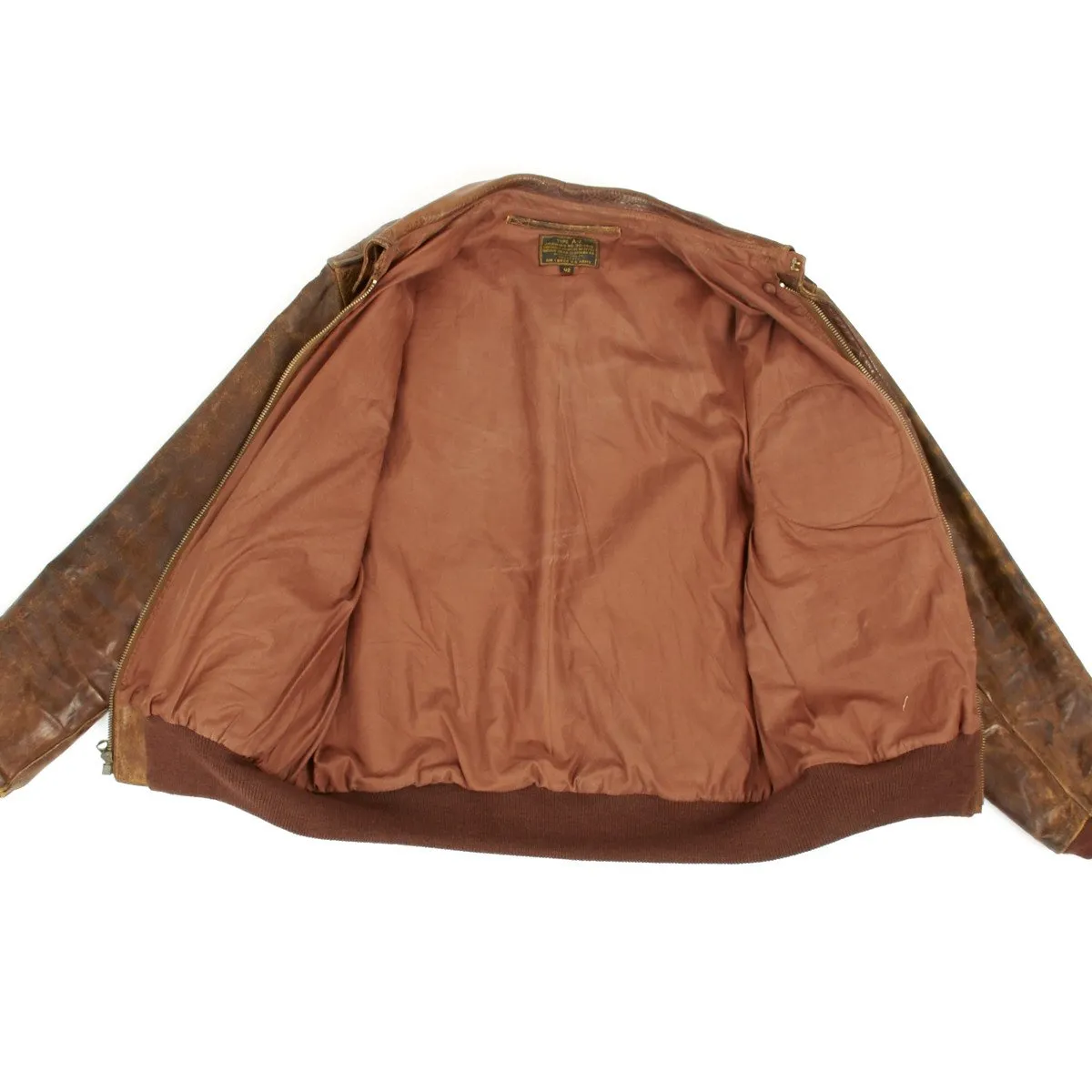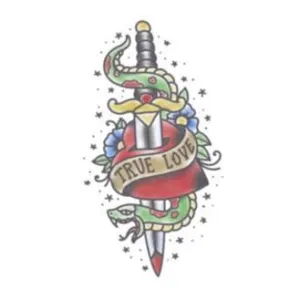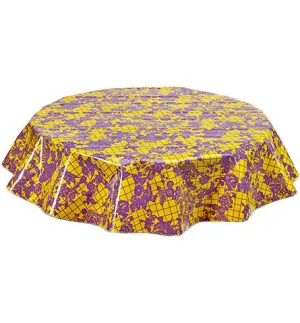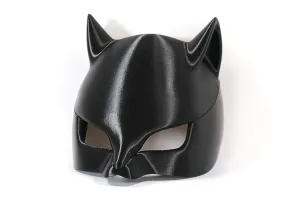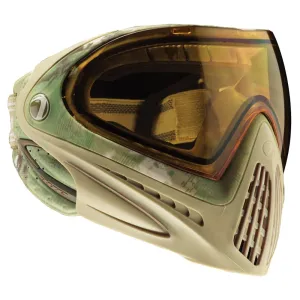Original Item: One-of-a-kind. This is an exceptional A2 leather flight jacket issued to a member of the crew of a P-61 Black Widow Night Fighter. It is offered in excellent condition in a large size 42 chest. There is almost no wear and the elastic cotton waist band and cuffs are nearly perfect, zipper in perfect working order.
The best aspect of this incredible jacket is the hand painted squadron patch on the left breast. It depicts a green skull with orange flight helmet on a black night background with a full moon. This patch was for the 348th Night Fighter Squadron. On the back of the jacket is a hand painted rendering of the P-61 Black Widow Aircraft.
The 348th Night Fighter Squadron (348th NFS) is an inactive United States Air Force unit. Its last assignment was with the 481st Night Fighter Operational Training Group, based at Salinas Army Air Base, California. The unit was inactivated on 31 March 1944. The squadron was the first dedicated Night Fighter Operational Training Squadron of the Air Force. The squadron trained newly-activated night fighter squadrons who were deployed overseas into combat until its inactivation in March 1944 due to a re-alignment of training unit designations. The squadron was formed in October 1942 from elements of the 81st Fighter Squadron as part of the Army Air Force School of Applied Tactics (AAFSAT) Fighter Command School at Orlando Army Air Base, Florida. Its personnel being veteran American pilots trained by the Royal Air Force in night interception operations. It was initially equipped with three Douglas DB-7s and twenty-three Douglas P-70s. Shortages in operational flying aircraft, spare parts and other issues kept flying training very rudimentary for the squadrons first classes that graduated in December 1942. As 1943 progressed additional aircraft and equipment arrived and the program expanded. In September, the first American-built dedicated night fighter began to arrive, the Northrup YP-61 Black Widow and a few production P-61As.
In January 1944 the entire program moved to Hammer Field, California and was placed under IV Fighter Command. The move placed the squadron near Northrop manufacturing facility at Hawthorne, California and most programmed P-61 squadrons were planned for operations in the Pacific and China Burma India Theaters. In March 1944 the 348th was disbanded when the AAF found that standard military units, based on relatively inflexible tables of organization were proving less well adapted to the training mission. Accordingly a more functional system was adopted in which each base was organized into a separate numbered unit during a reorganization of units in the United States. The squadron's personnel and equipment were transferred to Squadron A of the 450th Army Air Forces Base Unit (Night Fighter Replacement Training Unit) The P-61 Black Widow was the first U.S. aircraft to be designed specifically as a night fighter with radar. The largest and most powerful U.S. fighter, armament of the 3 seat Black Widow included 4x 20-mm M2 cannon, 4x 0.50 inch machine guns in the dorsal turret, and up to 1,600 lb of bombs or rockets.
Before the introduction of radar, locating the enemy at night was relatively unsuccessful, and up to the introduction of effective night fighters, bombers could attack at night and incur minimal losses. Ground radar was developed by World War II but could only send the fighter to the vicinity of the target. The use of night bombing by the enemy increased the need for the development of a night fighter with radar.
Allies and Axis - Approaches to Night Bombing - The Germans resorted to night bombing as an unacceptable number of German bombers were shot down in daylight raids. This prompted the British to adapt twin-engine fighters or small bombers for night fighting. By the end of 1940, radar was put into the Beaufighter, to attack German night bombers. The Japanese used nighttime bombing all across the Pacific as a means of harassment creating a need for Allied night fighters to stop these attacks. The American F6F Hellcat was used in this capacity by being equipped with a short range radar unit. The ground radar would send the fighter to the vicinity of the target where it could use its short range radar to close in on the target.
Producing the first fighter designed specifically for radar was a complicated process and although the P-61 was designed in 1940, problems concerning the SCR-720 radar delayed its introduction into service until 1944. The P-61 was designed to carry air interception radar in the nose of the aircraft. The AI radar was based on British models and had a range of almost five miles.
Color Schemes for the P-61 - The early camouflage colors for the P-61 was olive drab and gray, but a solid black was eventually found to be the most effect. Effectiveness as Night Fighter & Reconnaissance Aircraft Although entering service late in the war, the P-61 proved to be an effective night fighter and reconnaissance aircraft, seeing most of its service in the Pacific and European theaters. Some P-61 Black Widows remained in service until the 1950s.




